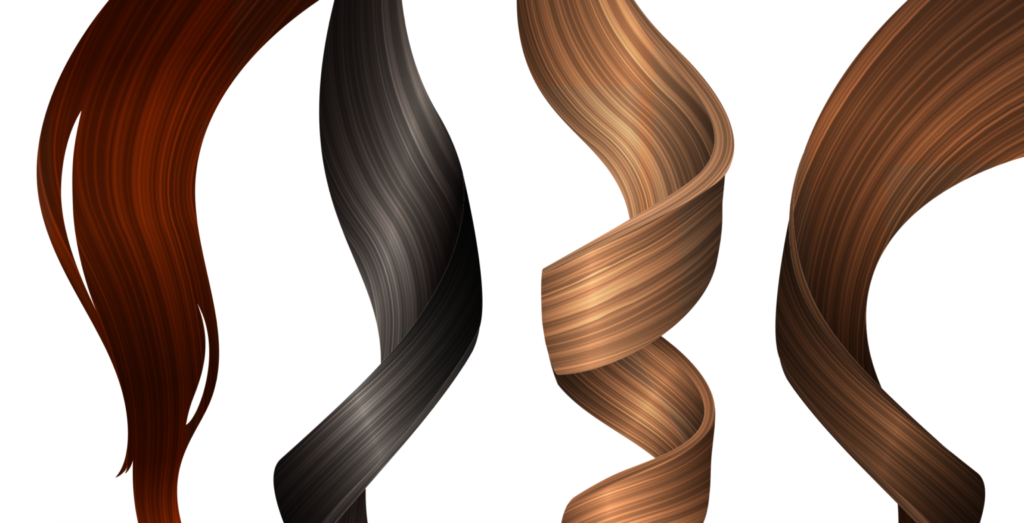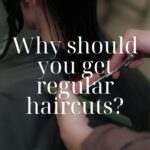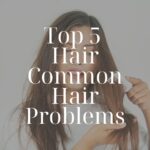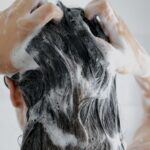Perms are becoming increasingly popular lately. However, we may not know the process and the different kind of perms that are available. In this article, we will let you into the world of Hair Perming. What should you expect? What should you request? How do you maintain? We got you covered.
Hair Perming Need To Know
Hair perming is a process that breaks and rebuilds the disulphide bonds of your hair creating the desired wave shapes permanently.
Once the disulphide bonds are broken, a neutraliser is applied to reform the bonds and lock in the desired hair shape.
With a wide variety of names for different types of perming styles, they are just simply variations of the two different perms – Hot and Cold Perm
Before getting a perm, keep in mind that the process will weaken your hair so it would be best to make sure that you hair is in good condition.
You may consult our friendly stylists at any one of our outlets to assess your hair condition, and provide you with advice on what would suit your hair condition best. Getting the right perm can help better shape your face and enhance your facial features

Hot Perm vs Cold Perm
Hot Perm
- Uses heat
- Low maintenance
- Long-lasting
- Silkier waves
Cold Perm
- No thermal application
- Requires maintenance
- Tighter
- Voluminous curls
Hot Perm
Hot perming is a transformative process that involves the application of an acidic solution and the strategic use of heat to reshape your locks. Initially, an acidic solution is carefully applied to break down the disulphide bonds within the hair. Subsequently, the cuticle undergoes a remoulding process to achieve the desired wave shapes, utilising digitally heated rods for precision. The application of heat is crucial in setting the protein structures into the chosen form. To complete the process, a neutraliser is applied, re-bonding the proteins and securing the wave shapes in place. Hot perms are particularly suitable for finer hair, given the thermal application. While requiring minimal maintenance, it’s worth noting that hot perms may not add as much volume at the roots, as the heated rods cannot be placed too close to the scalp.
Cold Perm
Cold perming, in contrast, follows a more traditional approach without the involvement of heat. This alkaline-based process utilises a solution containing ammonium thioglycolate, which is applied to the hair to break the disulphide bonds and modify the protein structure. The hair is then skillfully coiled around curling rods to create the desired spiral structure. The final step involves applying a neutraliser to rebalance and lock the proteins into the newly formed wave shapes. Cold perms are an excellent choice for those desiring tighter and more defined curls. However, it’s essential to note that maintaining the same level of curl may require the application of gels or curling creams. Unlike hot perming, cold perming doesn’t involve thermal application, resulting in a dramatic look closer to the roots.

Types of Perms
The perming process is universal. The only difference lies in the design of the resulting curls. The preceding haircut, and how the rollers are used can make a huge difference in the final result of your hair look. Read on for some examples of the different perms and how they work!

Digital Perm
Estimated process time: 4 hours
Well suited for: Coarse hair, preferably just over the shoulders.
Digital perms are very similar to ceramic perm which will be shared later in this blogpost, technique wise. The best way to differentiate these two perms from each other is to look at the ends of the hair. Softer and looser overall curls are often digital. This is due to the heat resistant curlers that heat up the hair at a lower temperature.
Digital perm works best for coarse hair, as it is able to withstand the damage and still retain the curls over a long period of time.

Source
Wave Perm
Estimated process time: 3 hours
Well suited for: Coarse hair, shoulder length and shorter.
Wave perm also known as Body perm increases hair volume, creating waves and not curls. Wave perm uses C-curls instead of S-curl in both digital and ceramic perms to create waves, giving your hair a softer voluminous look.
C-curls barely shorten the overall hair length, so it works perfectly shorter hair length.

Classic Perm
Estimated process time: 4 hours
Well suited for: Coarse hair, shoulder length and shorter.
Classic perm tends to be less damaging compared to heat perms. Though heat perms tend to last longer than cold perms.

Twist Perm
Estimated process time: 5 hours
Well suited for: Coarse hair, shoulder length and shorter.
The twist perm is made out of small tight spirals by wrapping your hair around small curlers with the application of chemicals. This perm uses the cold perm technique. The process of this perm typically takes longer than most perms due to its defined curls. This is a rather challenging and hideous process as it may damage the hair excessively if it is not in good condition during the time of the perm.

Pin Curl
Well suited for: Flat and short hair.
The pin curl creates a very defined wave bringing volume and texture to your hair. The name of the perm is derived from the use of pins to clip the hair up after twisting sections into single loop. This style is worn by Marilyn Monroe, and more.

Korean Perm
Estimated process time: 3-4 hours
The Korean perm was inspired by the hair that is worn by Korean actresses. This perm gives you a natural look, with defined curls that softly frames the face, looking voluminous. The ends of your hair will give off a healthy bouncy look. It will be best for your hair to be healthy at the time of perm, for it to be able to withstand the perming process.

Japanese Perm
Estimated process time: 3-4 hours
Japanese perm is a very free-spirit looking perm. It gives you very natural light waves that looks effortlessly stylish and slightly messy.
Choosing the perm that best suits you
There are so many perms for you to choose from, however consider factors such as your hair condition, face shape, hair length, and of course your style preference! That being said, it would be best to consult a hair stylist who specialises in hair perming to give you an analysis of your hair condition, and the possible results. This would be a safer bet, and also to protect your hair from any further damage.
Click to book an appointment with us!
Let's maintain that perm!
Maintaining a hair perm involves several steps to ensure that your curls remain bouncy and healthy-looking. Here are some tips to help you maintain your perm:
Avoid washing your hair for the first 48 hours after getting a perm. This will allow the curls to set in properly.
Use a sulfate-free shampoo and conditioner to keep your hair healthy and prevent your curls from becoming dry and frizzy.
Apply a deep conditioning treatment to your hair once a week. This will help to keep your hair hydrated and prevent damage.
Avoid using heat styling tools such as flat irons, curling irons, and blow dryers, as they can damage your curls and cause them to become frizzy.
Use a wide-toothed comb or your fingers to detangle your hair when it’s wet. Avoid using a brush, as it can break your curls.
Use a curl-enhancing product to help define your curls and keep them looking bouncy.
Avoid touching your hair too much, as this can cause frizz.
Get regular trims to keep your hair healthy and prevent split ends.
By following these tips, you can maintain your hair perm and enjoy beautiful, bouncy curls for weeks to come.









